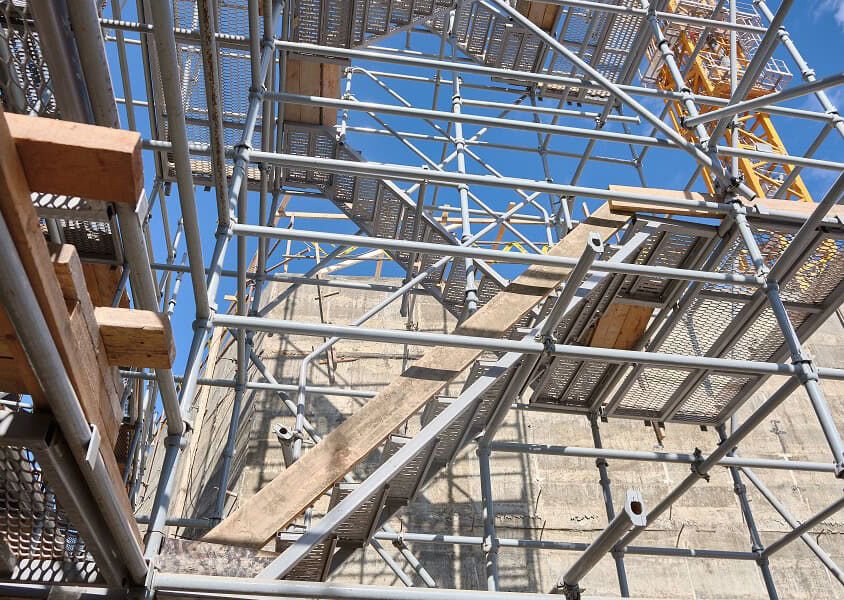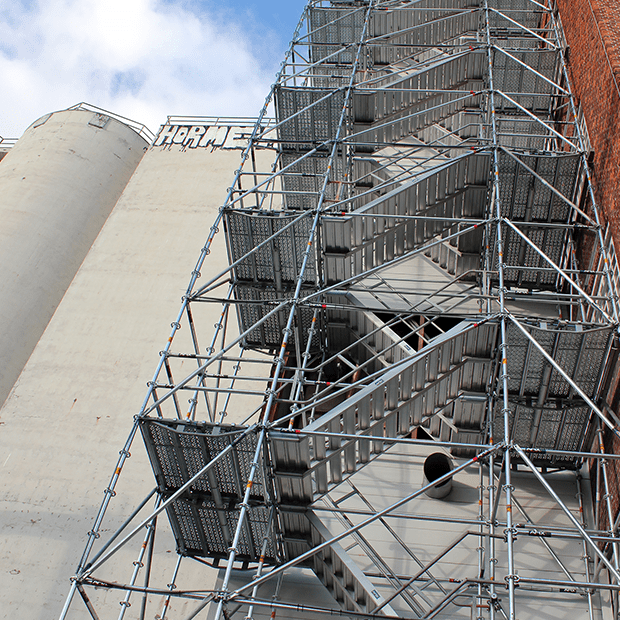Temporary Roof Scaffolding Experts Providing Secure and Reliable Installations
Temporary Roof Scaffolding Experts Providing Secure and Reliable Installations
Blog Article
Checking Out the Numerous Kinds Of Scaffolding Used in Construction Tasks
The building and construction market relies greatly on different types of scaffolding to satisfy certain project demands, each offering distinct benefits and applications. Traditional structure scaffolding offers a sturdy foundation for basic tasks, while put on hold scaffolding is essential for work on skyscraper structures. Other options, such as system and rolling scaffolding, provide to effectiveness and movement, specifically. The cantilever alternative confirms invaluable in city environments where space is constrained. Comprehending the nuances of these scaffolding kinds is crucial for optimizing safety and security and efficiency on building websites, triggering a more detailed exam of their one-of-a-kind qualities and applications.

Standard Structure Scaffolding
Conventional structure scaffolding is one of the most commonly made use of techniques in the building market as a result of its toughness and adaptability. This system contains horizontal and upright frameworks that are set up to create a steady platform for products and employees. The major elements include vertical articles, straight ledgers, and angled dental braces, which with each other provide a solid framework that can sustain substantial lots.
One of the key benefits of standard framework scaffolding is its versatility to various construction projects, ranging from domestic structures to big business frameworks. The modular design permits for easy setting up and disassembly, making it efficient for both lasting and short-term tasks. In addition, the system can be tailored in elevation and size, fitting different structure designs and website conditions.
Security is paramount in scaffolding applications, and typical structure systems are outfitted with guardrails and toe boards to stop drops and guarantee worker protection. Normal inspections and adherence to security guidelines are crucial in keeping the stability of the scaffold (Scaffolding). Generally, standard structure scaffolding continues to be an essential option in the building industry, giving a reputable platform for labor and enhancing total project efficiency

Suspended Scaffolding
Suspended scaffolding provides an unique remedy for building projects that call for access to elevated surface areas, specifically in circumstances where conventional frame scaffolding might be impractical. This kind of scaffolding is usually put on hold from the roof covering or upper levels of a structure, utilizing a system of ropes, systems, and pulleys to produce a functioning space that can be readjusted to different elevations.
One of the primary advantages of put on hold scaffolding is its flexibility. It can be quickly repositioned or reduced to accommodate changes in construction needs, making it suitable for jobs such as window installation, façade job, and maintenance on skyscrapers. Additionally, the minimal impact of put on hold scaffolding enables for much better usage of ground room in city settings, where space is typically limited.
Security is a critical consideration in the use of suspended scaffolding. In general, put on hold scaffolding provides a effective and efficient remedy for accessing hard-to-reach locations in different building and construction circumstances, improving both productivity and security on site.
System Scaffolding
System scaffolding, commonly considered a modern remedy in the scaffolding sector, consists of pre-engineered elements that can be quickly constructed and adapted for numerous construction tasks. Scaffolding. This kind of scaffolding is characterized by its modular design, which allows for versatility and efficiency on work websites, fitting structural needs and various elevations
Commonly made from high-strength steel or aluminum, system scaffolding supplies enhanced toughness and security. The components include upright posts, straight ledgers, and diagonal dental braces, which interconnect firmly, making sure a durable structure. The design usually integrates standard fittings, simplifying setting up and scaffolding example vygotsky disassembly processes, thereby lowering labor time and expenses.

Rolling Scaffolding
Rolling scaffolding is a versatile option to typical set scaffolding, developed for mobility and convenience of usage on construction sites. This sort of scaffolding is composed of a system sustained by structures with wheels, permitting employees to conveniently transfer it as required. The flexibility feature substantially improves performance, as it lessens downtime connected with constructing and disassembling taken care of scaffolding.
Commonly created from light-weight products such as aluminum or steel, rolling scaffolding uses a durable yet portable option for tasks requiring frequent repositioning - Scaffolding. It is particularly useful in jobs such as painting, drywall installment, and electric work, where access to numerous heights and locations is needed
Safety and security is vital in rolling scaffolding design, with features such as securing wheels to stop unintentional activity when being used, and guardrails to shield workers from falls. In addition, numerous models are flexible in height, fitting various project needs.
Cantilever Scaffolding

The style of cantilever scaffolding usually involves making use i loved this of arms or brackets secured to a building or framework, enabling the system to extend exterior safely. Safety and security is extremely important; hence, these scaffolds have to be crafted to hold up against ecological problems and numerous lots. Routine assessment and upkeep are vital to guarantee structural integrity and worker security.
Cantilever scaffolding is preferred for its versatility and reliable usage of space, making it a preferred choice in metropolitan settings where space restrictions are usual. Additionally, it helps with much easier access to high elevations, inevitably adding to the general performance of construction jobs. As with all scaffolding types, proper training and adherence to security requirements are critical for employees utilizing cantilever scaffolding.
Conclusion
Typical structure scaffolding supplies stability, while suspended scaffolding provides versatility for elevated jobs. System scaffolding promotes fast setting up, and rolling scaffolding improves scaffolding feet base mobility for varying work settings.
Conventional frame scaffolding provides a strong structure for basic tasks, while put on hold scaffolding is necessary for job on high-rise structures.Moving scaffolding is a flexible option to standard set scaffolding, created for movement and simplicity of usage on building and construction sites. As with all scaffolding kinds, proper training and adherence to security standards are crucial for workers making use of cantilever scaffolding.
Conventional structure scaffolding provides security, while put on hold scaffolding provides adaptability for raised jobs. System scaffolding facilitates quick setting up, and rolling scaffolding improves movement for differing job environments.
Report this page